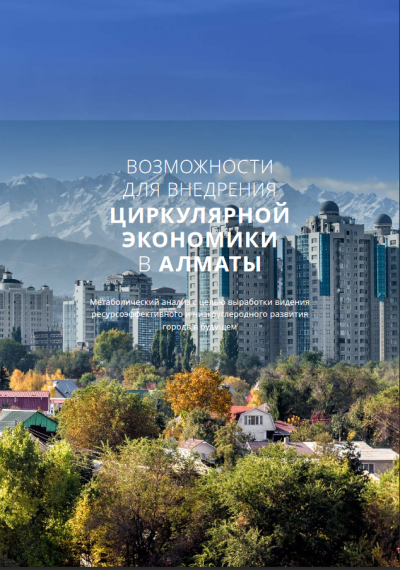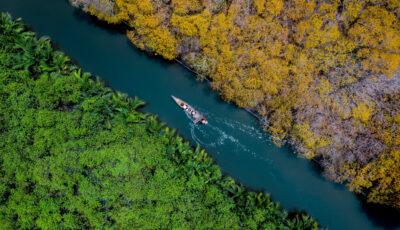5 July 2019. The city of Almaty is the first city in Central Asia which completed a metabolic analysis to identify circular economy opportunities. In a metabolic analysis all resource flows are mapped out, tracing materials from their origin to their usage and eventual destination. Data visualisations show how Almaty uses its material resources and assets to satisfy the needs of its citizens for shelter, nutrition and mobility. The selection of the most promising circular economy opportunities recommendations in the report, relied on the suggestions and recommendations of over 100 experts and stakeholders from the city and their reading of the data. Overviews of existing circular economy initiatives in agriculture, construction and industry show that Almaty is already on the road to a circular future.
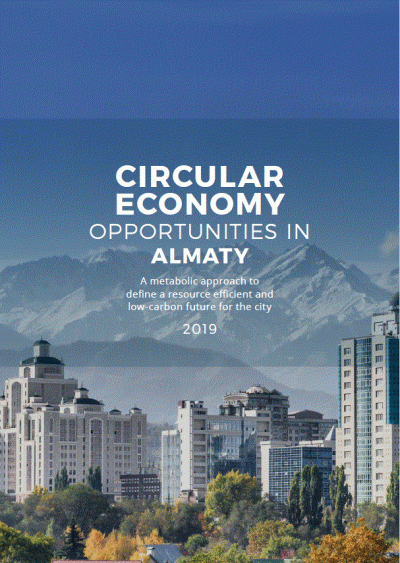
Download the Circular Almaty report in English.
Download the Circular Almaty report in Russian.
Almaty is experiencing impressive economic growth and is re-establishing its position as an exporter of agricultural commodities. As an important station on the Belt and Road Initiative, Almaty sees its connectivity with Europe, China and other regions improving, easing international trade. Next to this, there is momentum as the city is expanding, and its government is opening new channels to facilitate a public debate over important urban planning decisions, further tailoring the development of the city to the immediate needs of its citizens.
The report describes 40 circular initiatives, ranging from small start-ups to large government programmes which were proposed by the over 100 stakeholders which were trained and consulted throughout the project. The inspiring initiatives which are already ongoing in Almaty demonstrate that there already is a solid basis to work from. The recommendations focus on three inpactful activities in the city: 1) consumption with a focus on food and agriculture, 2) industrial production, 3) construction.
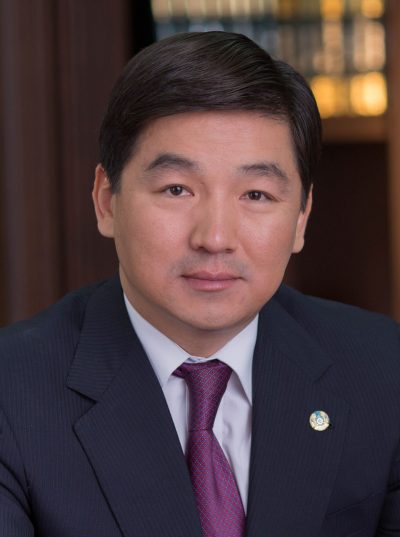
Such projects help strengthen international cooperation and share positive experiences, as well as fostering a dialogue between all stakeholders to achieve the principles of sustainable development. (B.K. Baibek, Mayor of Almaty City)
Food and agriculture
In agriculture, the most promising circular economy opportunities lie in diverting organic residues away from landfills and processing them into soil enhancers or organic fertilisers. The agricultural production ambitions in the region require investing in soil quality. Applying processed organic residues on land can reduce the application of synthetic fertilisers, while also improving water retention, soil life and resilience to erosion.
Industrial production
Local industries are already collecting and recycling a significant share of the mineral and metal residues. The improved connectivity to foreign markets through the Belt and Road Initiative can support the extension of manufacturing capacity with remanufacturing, whereby used products or components are refurbished as new. This could include car parts, furniture and even construction elements. Taking this even a step further, service models can support this approach by incentivising companies to produce products that last, allowing them to retain ownership and run take-back schemes to offer the product to a second or even third user in, perhaps, different market segments.
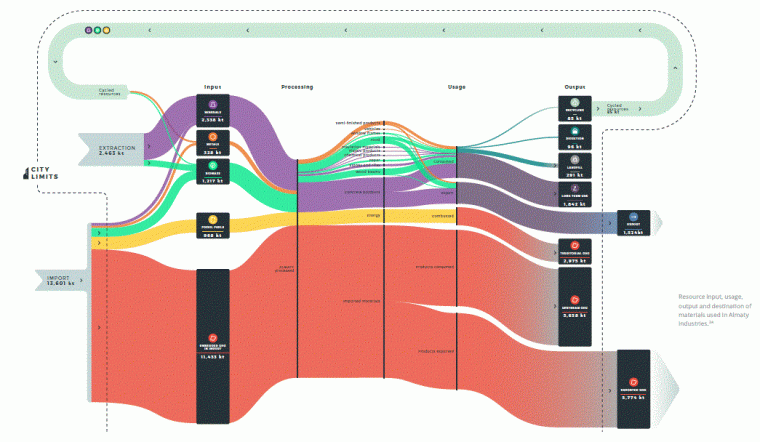
Also within the city, designers and fabricators can tap into secondary products to repair, repurpose and redesign them into fashionable new products. Circular economy concepts can help keep small assembly, design and repair activities within the city, avoiding that new urban developments become ‘sleeping districts’ and avoiding that citizens need to travel far to access certain services, acquire circular products, or simply get a satisfying job.
Construction
Circular strategies in the construction sector are based on passive design and adjusting the design to replacing new, carbon-intensive construction materials with materials of secondary or renewable origin. This starts with design. Merely considering energy and resource use in the design phase of a building can bring down energy use with more than half. Design can also open opportunities for the use of secondary and renewable construction materials, potentially turning the construction sector into a net sink of CO2.
By showcasing also what is already happening in the city, the circular prospect becomes more comprehensible. Artist impressions in the report aim to make the circular future tangible, connect it with socio-economic challenges and show how circular initiatives can make Almaty an even more pleasant place to live in.

Client: Emerging Markets Sustainability Dialogue Challenge Fund
Partners: Circle Economy; Center for Sustainable Production and Consumption in Almaty; Fabrications
Advisory team: Almaty Municipality; UNDP, UN Environment; Asian Development Bank; European Bank for Reconstruction and Development; Kazakhstan Business Council for Sustainable Development; Almaty Chamber of Commerce; EU Delegation in Kazakhstan; Waste Management Company Tartyp.
2018-2019
Read more on the lessons learned from this first circular economy analysis in Central Asia.

